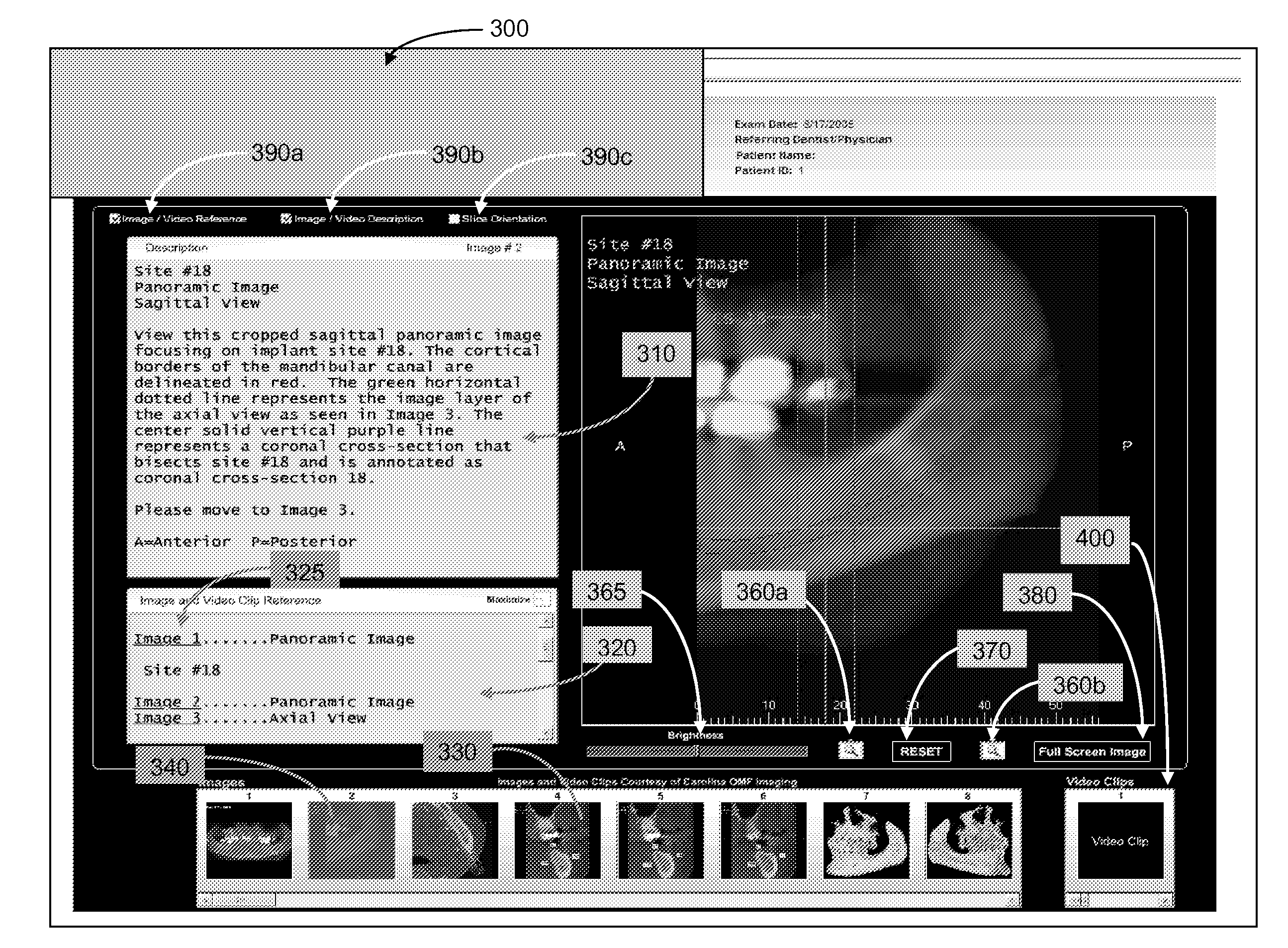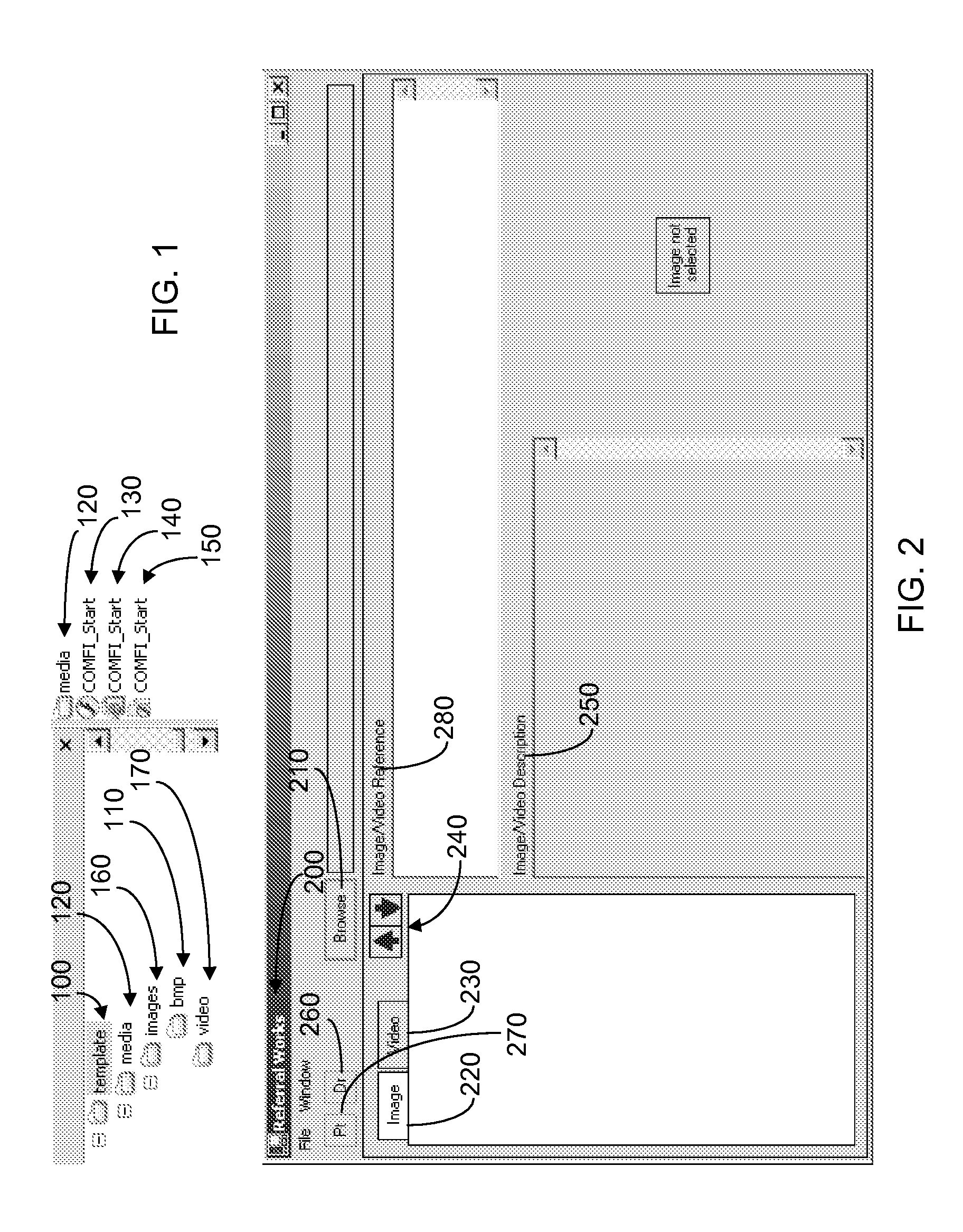Method for forming and distributing a composite file including a dental image and associated diagnosis
a composite file and dental image technology, applied in dental surgery, applications, instruments, etc., can solve the problems of difficult to correlate the images with a separate image, unable to perform a diagnosis or otherwise make efficient use of the wealth of information provided, and implementing costly high-resolution printing on expensive film media
- Summary
- Abstract
- Description
- Claims
- Application Information
AI Technical Summary
Problems solved by technology
Method used
Image
Examples
Embodiment Construction
[0025]The present inventions now will be described more fully hereinafter with reference to the accompanying drawings, in which some, but not all embodiments of the inventions are shown. Indeed, these inventions may be embodied in many different forms and should not be construed as limited to the embodiments set forth herein; rather, these embodiments are provided so that this disclosure will satisfy applicable legal requirements. Like numbers refer to like elements throughout.
[0026]According to embodiments of the present invention, a patient is subjected to a three-dimensional imaging process in a dental imaging center using, for example, a conebeam technology imager or other suitable 3D imaging machine such as, for instance, a Model CB MercuRay for maxillofacial imaging, produced by Hitachi Medical Systems America of Twinsburg, OH. Such an imager generally includes a software package, or is otherwise configured to capture a comprehensive set of images of at least a portion of a ma...
PUM
 Login to View More
Login to View More Abstract
Description
Claims
Application Information
 Login to View More
Login to View More - R&D
- Intellectual Property
- Life Sciences
- Materials
- Tech Scout
- Unparalleled Data Quality
- Higher Quality Content
- 60% Fewer Hallucinations
Browse by: Latest US Patents, China's latest patents, Technical Efficacy Thesaurus, Application Domain, Technology Topic, Popular Technical Reports.
© 2025 PatSnap. All rights reserved.Legal|Privacy policy|Modern Slavery Act Transparency Statement|Sitemap|About US| Contact US: help@patsnap.com



